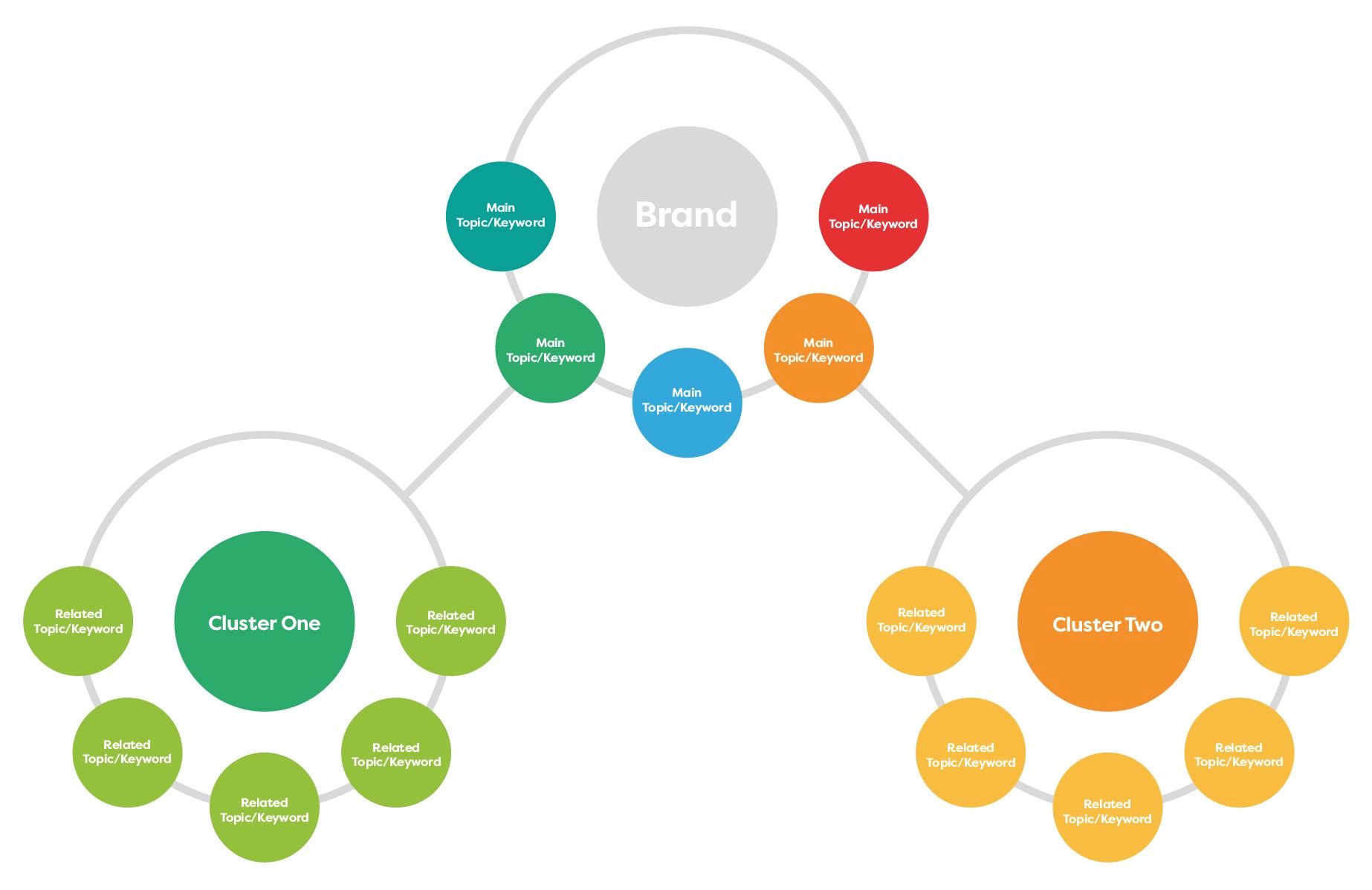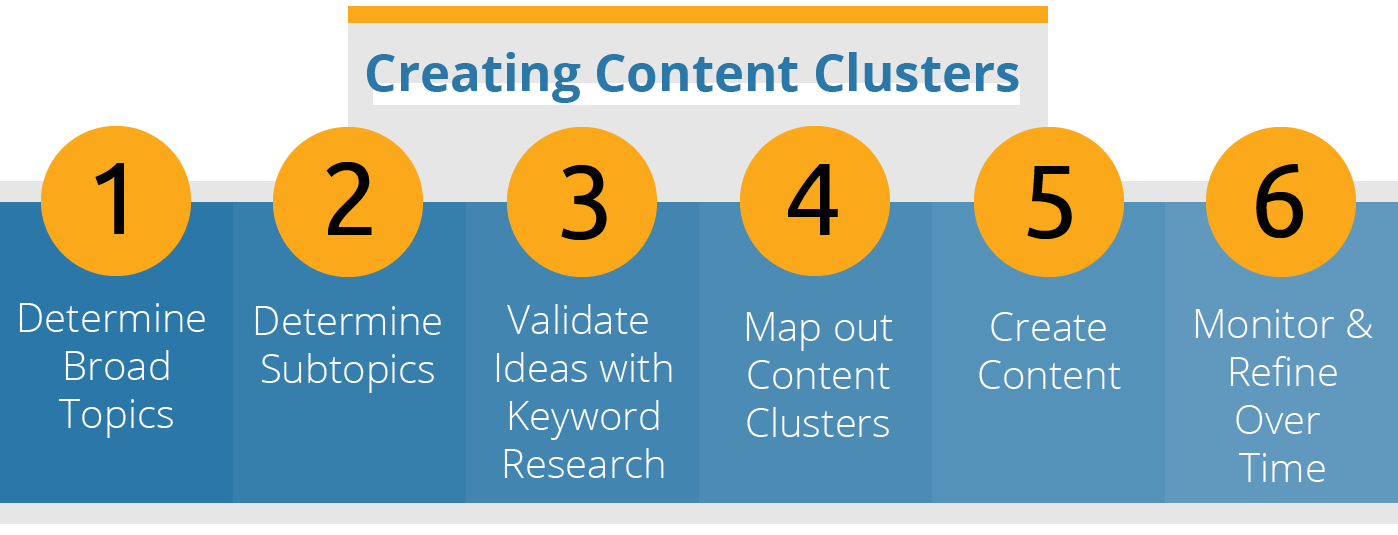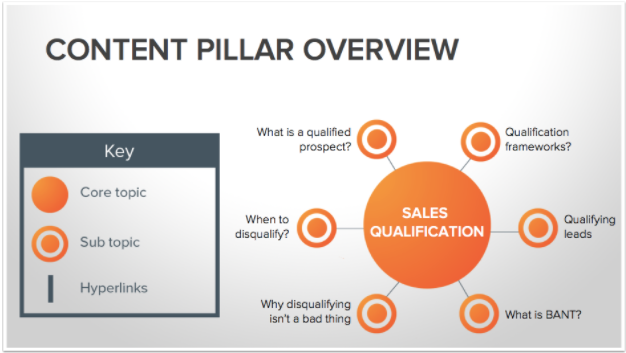As the digital world evolves, so does the landscape of Search Engine Optimization (SEO). In today’s competitive market, a robust content strategy stands as the cornerstone of online visibility. Amidst the myriad of techniques to climb the search engine ranks, clustering in writing emerges as a revolutionary strategy. This approach marks a significant shift in content marketing, steering away from traditional keyword stuffing towards a more organized, thematic content arrangement.
Our exploration today delves into the concept of topic clusters. This method clusters examples of related content around a central theme, which acts as a beacon for search engines and users alike. This strategy, known as ‘clustering in writing,’ aims to provide a comprehensive answer to the question, ‘What is a cluster?’ By embracing this methodology, businesses can enhance their SEO efforts, ensuring their content not only reaches but resonates with their target audience.
The essence of this blog is to shed light on leveraging topic clusters for superior search engine visibility. With the right implementation of content clusters, your website can become a hub of information that search engines favor, propelling your pages to the top of the SERPs. Join us as we navigate through the future of SEO in 2024, highlighting how strategic clustering in writing can redefine your online presence.

Understanding the Power of Clusters in Writing for SEO
In the realm of SEO, topic clusters represent a strategic evolution, marking a shift from the traditional keyword-centric content models to a more thematic, holistic approach. At its core, a topic cluster is a collection of interrelated content pieces, all revolving around a central theme, or what we refer to as the ‘pillar content.’ This pillar content serves as the foundation, typically a comprehensive guide or overview of a broad topic. Surrounding this cornerstone are various pieces of ‘cluster content,’ each focusing on a specific subtopic or aspect of the main theme.
Structure of Topic Clusters
The beauty of topic clusters lies in their structure:
- Pillar Content: This is the main page that broadly covers the topic. It acts as the hub of knowledge for readers.
- Cluster Content: These are detailed articles or blog posts that delve into the nuances of the pillar topic, addressing specific questions or subtopics.
- Hyperlinks: Hyperlinks are the glue that holds the cluster together. Hyperlinks create a seamless navigation experience for users and search engines, connecting the cluster content back to the pillar page.
By adopting clustering in writing, the focus in content creation shifts from merely targeting an array of disjointed keywords to building a cohesive, user-friendly ecosystem of content. This method not only aids in ‘clustering for search engines’ but also significantly enhances the user experience. Search engines, like Google, favor websites that provide comprehensive content on a topic, recognizing them as authoritative sources. Consequently, websites that implement topic clusters often see improved rankings in SERPs. Initial experiments with topic clusters by former HubSpot employees Anum Hussain and Cambria Davies showed a direct correlation between the extent of interlinking within topic clusters and improved placements in search engine results pages (SERPs), as well as increased impressions.
Elevating SEO through Clustering in Writing
The strategic implementation of topic clusters is revolutionizing SEO, marking a pivotal shift towards more organized, navigable content that both search engines and users appreciate. This approach not only refines the website’s architecture but also amplifies its authority on particular subjects, enhancing the overall user experience. Here’s how topic clusters are setting new standards in SEO content writing:
1. Enhanced Website Structure for Better Crawling and Indexing
Topic clusters streamline website architecture, making it more logical and easier for search engines to crawl and index. By organizing content around central pillars and related subtopics, search engines can quickly understand and categorize the site’s content.
2. Domain Authority Boost on Specific Subjects
By focusing on comprehensive coverage of a topic through interconnected content, websites can establish themselves as authoritative sources. This concentration on specific subjects through clustering in writing significantly boosts domain authority in the eyes of search engines.
3. Improved User Experience with Comprehensive Topic Coverage
Clustering content around key topics offers users a holistic understanding of the subject matter. This not only satisfies the user’s query more effectively but also encourages deeper engagement with the site’s content.
4. Increased Page Visibility in SERPs
Search engines favor websites that provide thorough, topic-focused content. Topic clusters, by offering a depth of information on specific subjects, naturally achieve higher visibility and rankings in search engine results pages (SERPs).
5. Higher Internal Linking Efficiency
The strategic use of hyperlinks within a cluster promotes easier navigation for users and supports SEO efforts by distributing page authority across the cluster. This interconnectedness boosts the SEO performance of individual pages within the cluster.
6. Reduction in Content Cannibalization
Topic clusters help in organizing content in such a way that prevents overlap or competition among pages for the same keywords. This clear delineation ensures that pages support rather than compete with each other, optimizing the site’s overall SEO performance.
Incorporating topic clusters into your content writing strategy not only positions your website as a knowledge hub for specific topics but also significantly enhances its search engine rankings. As we navigate the evolving landscape of SEO in 2024, the focus on clustering in writing and strategic content mapping will undoubtedly become a cornerstone for dominating the SERPs. This methodical approach to content creation and organization is proving to be indispensable in achieving and maintaining top search engine rankings.

Crafting a Winning Topic Cluster Strategy for SEO Excellence
Developing a topic cluster strategy is pivotal for businesses aiming to enhance their SEO and dominate search engine rankings. This approach requires thoughtful planning and execution, focusing on structured content that resonates with both search engines and users. Here’s a step-by-step guide to creating a robust topic cluster strategy:
1. Identify Your Pillar Topics
Start by pinpointing broad themes closely aligned with your business’s core offerings and audience interests. These themes should be broad enough to generate multiple subtopics yet specific enough to provide targeted value.
2. Conduct Thorough Keyword Research
Dive deep into keyword research to uncover specific queries related to your pillar topics. Look for long-tail keywords and questions your target audience is asking. These will form the basis of your cluster content.
3. Map Out Cluster Content
With your keywords in hand, outline potential blog posts, articles, or pages that address these specific queries. Each piece of cluster content should focus on a niche aspect of the broader pillar topic, providing detailed and valuable insights.
4. Create Compelling Pillar Content
Your pillar content should offer a comprehensive overview of the topic at hand. It serves as the cornerstone of your topic cluster, linking out to each piece of cluster content. Ensure it’s authoritative, informative, and engaging.
5. Optimize Internal Linking
Strategic internal linking is crucial. Each piece of cluster content should link back to the pillar content and vice versa. This not only helps with SEO but also enhances the user’s navigational experience across your content.
6. Measure and Adjust Your Strategy
Utilize analytics to track the performance of your topic clusters. Look at crucial website and content metrics like page views, bounce rate, and SERP rankings. Be prepared to refine and expand your clusters based on performance and evolving audience interests.
7. Promote Your Content Across Channels
Don’t rely on organic traffic alone. Promote your pillar and cluster content across social media, email newsletters, and other relevant platforms to drive traffic and engagement.
Leveraging Clustering in Writing for Your Website
Integrating topic clusters into your website’s content strategy is a transformative step toward enhancing your SEO performance in 2024. This approach not only organizes your content more effectively but also aligns with search engine algorithms’ evolving preferences. Here are key steps to successfully implementing clustering in writing on your website:
- Audit Your Existing Content: Begin by reviewing your current content inventory. Identify pieces that can serve as pillar content or be incorporated into new clusters. This helps in utilizing existing resources efficiently.
- Structure Your Website for Topic Clusters: Organize your site’s architecture to accommodate topic clusters. This might involve restructuring your menu or navigation to highlight pillar pages, ensuring they are easily accessible.
- Create and Optimize Pillar Pages: Develop comprehensive pillar pages that provide a broad overview of the main topics. Ensure these pages are optimized for SEO, with clear, engaging, and informative content.
- Develop Cluster Content: For each pillar topic, produce detailed cluster content addressing specific subtopics, questions, or keywords. This content should offer depth, value, and insights into the nuances of the main topic.
- Implement Strategic Internal Linking: Link cluster content to the relevant pillar page and vice versa. This creates a cohesive network of content that boosts SEO by making it easier for search engines to crawl and understand your site’s structure.
- Monitor and Refine Your Clusters: Use analytics to track the performance of your topic clusters. Pay attention to metrics like traffic, engagement, and ranking. Be prepared to update your content and adjust your strategy based on these insights.
- Continuous Content Creation: Keep expanding your clusters with new content that addresses emerging trends, questions, or keywords related to your main topics. This ongoing effort ensures your clusters remain relevant and authoritative.

Clustering in Writing: The Road Ahead
The shift towards topic clusters represents a pivotal evolution in SEO strategy, emphasizing the importance of structured, thematic content for enhancing search engine rankings and user experience. By organizing content into interconnected clusters around core topics, businesses can significantly improve their website’s navigability for both users and search engines, establishing authority in their niche and boosting their online visibility.
Integrating topic clusters into your SEO efforts requires a nuanced understanding of content strategy and a meticulous approach to content creation and linking. This is where our expertise in content marketing and writing services becomes invaluable. At Scribblers India, our team specializes in crafting tailored content strategies that leverage the power of topic clusters to drive SEO success. Choosing our services means partnering with a team dedicated to not only enhancing your SEO performance but also elevating your brand’s online presence through strategic, quality content.
Let us help you navigate the future of SEO with our comprehensive content clustering techniques, ensuring your business remains at the forefront of digital marketing innovation. Contact us to learn more.
Frequently Asked Questions
Q: What are topic clusters?
A: Topic clusters are an SEO strategy that groups related content around a central theme, known as pillar content. This approach organizes your website’s content into clusters, enhancing search engine understanding and user navigation.
Q: How do topic clusters improve SEO?
A: By focusing on thematic content, topic clusters help search engines see your site as an authority on specific subjects, improving your rankings. They also improve site architecture, making it easier for search engines to crawl and index your pages.
Q: Can topic clusters enhance user experience?
A: Absolutely. Topic clusters provide users with comprehensive information on a subject, facilitating easier content navigation. This can lead to increased engagement, longer visit times, and reduced bounce rates.
Q: What’s the difference between a pillar page and cluster content?
A pillar page provides a broad overview of a topic, while cluster content delves into specific aspects of that topic. Both are linked together to offer detailed and accessible information.
Q: Why choose our services for implementing topic clusters?
A: Our expertise in content marketing and SEO enables us to create customized topic clusters that drive your SEO success. We understand how to craft and connect your content strategically to maximize visibility and engagement.





